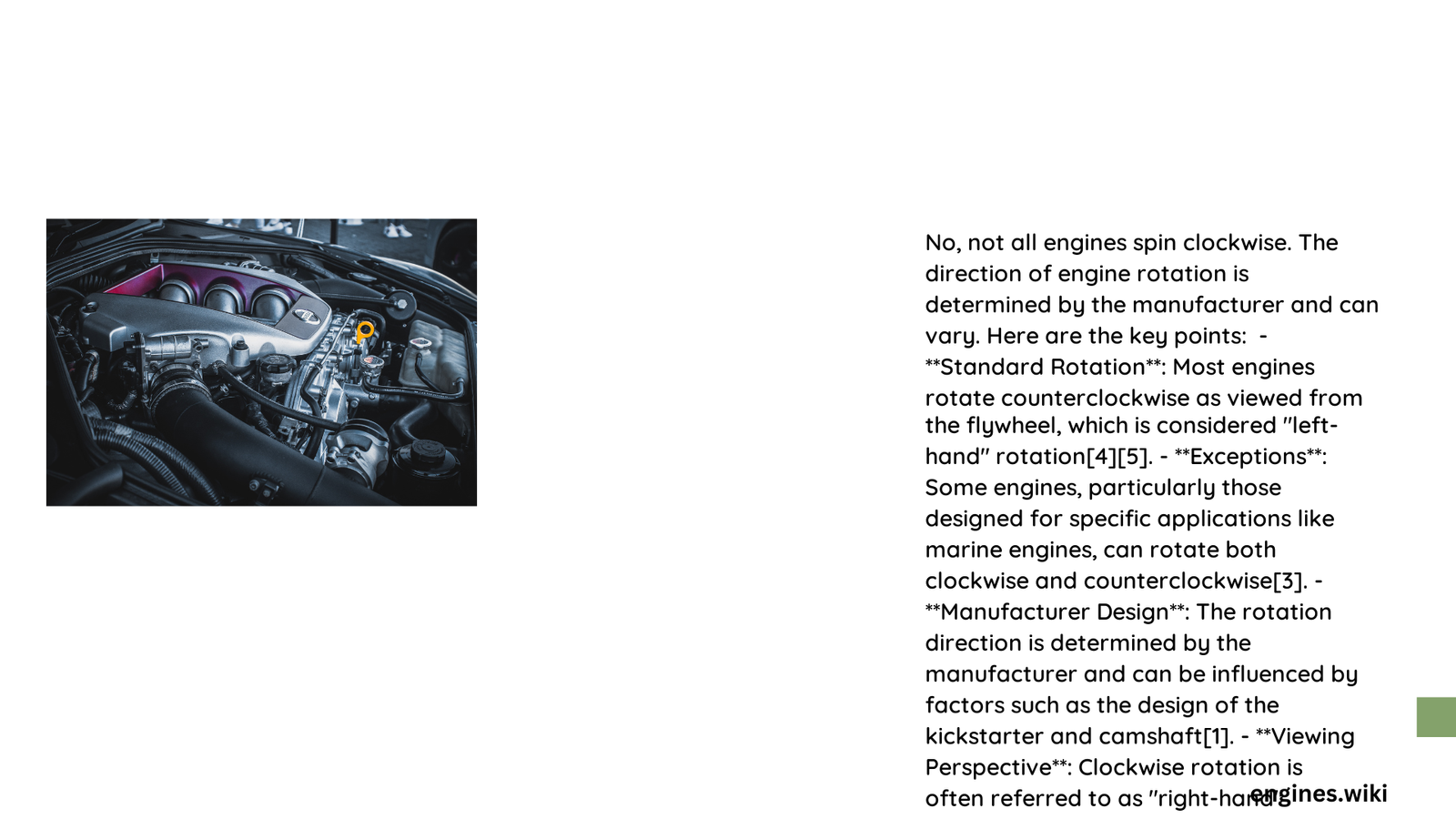Does an Engine Spin Clockwise? Unraveling the Mechanical Mystery
Most automotive engines in North America and globally follow a standard rotational behavior, typically spinning clockwise when viewed from the front pulley end. This fundamental mechanical characteristic is crucial for understanding vehicle engine dynamics, drivetrain compatibility, and performance optimization. While the majority of engines adhere to this clockwise rotation, fascinating exceptions exist that challenge this conventional wisdom.
What Determines Engine Rotation Direction?
Standard Rotation Mechanics
| Viewing Perspective | Typical Rotation |
|---|---|
| Front of Engine | Clockwise |
| Rear of Engine | Counter-clockwise |
Most engines are designed to rotate clockwise due to several engineering considerations:
- Transmission Alignment
- Ensures smooth power transfer
- Matches standard drivetrain configurations
-
Minimizes mechanical stress
-
Manufacturing Standardization
- Simplifies component design
- Reduces production complexity
- Enables easier maintenance and replacement
Are There Exceptions to Clockwise Rotation?
Unique Engine Configurations
Some notable exceptions challenge the standard clockwise rotation:
- Honda Pre-2000 Engines
- Rotate counter-clockwise when viewed from front
- Includes B-series engine models
-
Represents a rare engineering approach
-
Corvair Flat Six Engine
- Designed with counter-clockwise rotation
- Unique among American automotive engines
- Demonstrates engineering innovation
How Does Rotation Impact Vehicle Performance?
Performance Considerations
Engine rotation does not directly influence:
– Torque output
– Fuel efficiency
– Overall engine performance
However, rotation direction critically affects:
– Drivetrain compatibility
– Component wear patterns
– Transmission alignment
What Factors Influence Engine Rotation?
Technical Design Elements
Several engineering factors determine rotation direction:
- Crankshaft design
- Camshaft configuration
- Transmission interface
- Historical manufacturing practices
- Regional engineering standards
Can Engine Rotation Be Modified?
Modification Challenges
Changing engine rotation is complex and typically involves:
– Specialized transmission adaptations
– Custom crankshaft modifications
– Comprehensive drivetrain redesign
Practical Implications of Engine Rotation
Real-World Applications
- Automotive Industry: Standardized clockwise rotation
- Marine Engines: Potential reverse rotation configurations
- Industrial Machinery: Varies based on specific requirements
Technical Insights
Precision Engineering
Modern engine design prioritizes:
– Consistent rotational behavior
– Minimal mechanical friction
– Optimal power transmission
Conclusion
While most engines spin clockwise, the mechanical world embraces diversity through unique exceptions and specialized designs.
References
- Honda-Tech Forum Discussion
- Max Performance Inc. Technical Resources
- Seaboard Marine Engineering Insights
Note: Always consult professional mechanics for specific engine configuration details.

